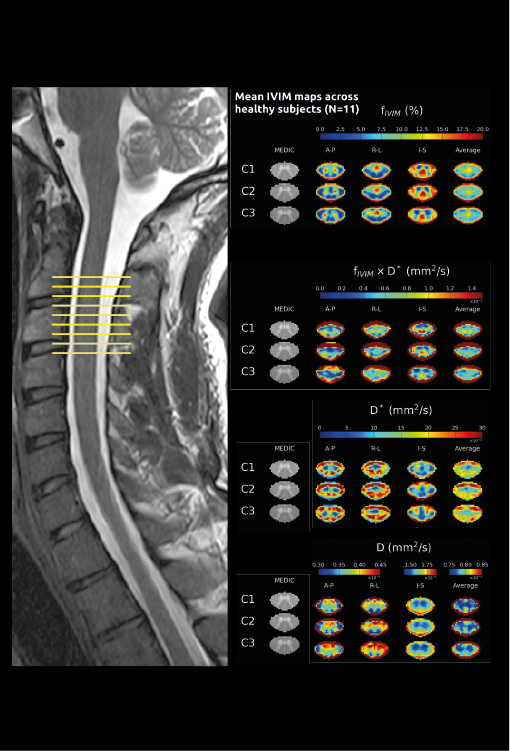Navigation auf uzh.ch
Navigation auf uzh.ch

Hypoperfusion and hypoxia in the injured spinal cord
This project aims to apply quantitative MRI (qMRI) techniques, such as intra voxel incoherent motion (IVIM) MRI (estimates blood perfusion in tissue) and quantitative BOLD (qBOLD) (estimates change of (de-) oxyhaemoglobin molecules) allow quantifying in-vivo hemodynamics in the injured spinal cord.
SCI and DCM share several phathophysiological processes, including complex hemodynamic impairments at the epicentre of the injury/lesion.
Cord hemodynamic impairments contribute to neuronal deficits and consequently clinical impairments after SCI. Crucially, experimental evidence suggests that impaired blood flow and hypoxia does not only affect the focal injury site, but also the spinal cord remote to the level of injury.
However, how hemodynamics evolves at and beyond the level of lesion and relate to clinical impairments in human SCI is understudied. This qMRI techniques can benefit from ultra-high field (UHF) systems (i.e. 7 Tesla scanner) in patients with no metal implants which enable very high image resolution and contrast.
We hypothesise that the impairment of cord perfusion and oxygenation will be variable following SCI and extent beyond the focal lesion area (i.e. above the level of injury). Less hemodynamic impairments (e.g. better tissue oxygenation) will be associated with better clinical outcome and recovery after injury in traumatic and non-traumatic SCI patients. This study is supported by Wing for Life (WFL-CH-19/20)